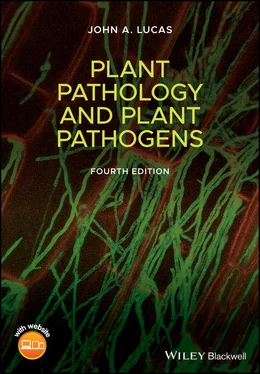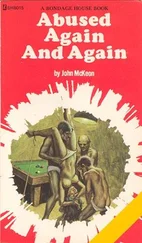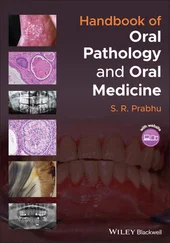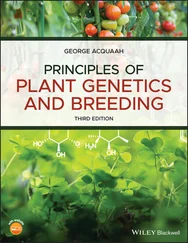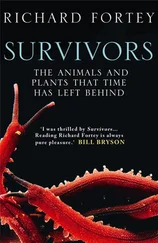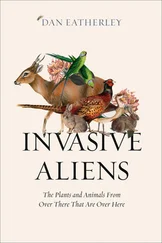1 Cover
2 Preface
3 List of Abbreviations
4 About the Companion Website
5 Part I: Plant Disease 1 The Diseased Plant Concepts of Disease Symptoms of Disease Causes of Disease Significance of Disease Further Reading 2 The Microbial Pathogens Pathogens and Pathogenesis Koch's Postulates Host Resistance and Pathogen Virulence Further Reading 3 Pathogen Biology Fungi as Plant Pathogens Oomycetes as Plant Pathogens Bacteria as Plant Pathogens Mycoplasma‐Like Organisms as Plant Pathogens Protozoa as Plant Pathogens Viruses as Plant Pathogens Viroids as Plant Pathogens Variation in Microbial Pathogen Populations Dispersal of Pathogens Pathogen Survival Further Reading 4 Disease Assessment and Forecasting Disease Detection Disease Assessment in the Crop Disease Forecasting Further Reading 5 Plant Disease Epidemics Epidemic Development Global Pandemics Relevance of Epidemiology to Control Plant Biosecurity Further Reading
6 Part II: Host–Pathogen Interactions 6 Entry and Colonization of the Host The Infection Court Direct Penetration Penetration Through Natural Openings Penetration Through Wounds The Host–Pathogen Interface Structure and Function of Haustoria Development Following Infection Further Reading 7 The Physiology of Plant Disease Postinfectional Changes in Host Physiology Conclusion Further Reading 8 Microbial Pathogenicity A Molecular Genetic Approach Enzymes and Microbial Pathogenicity Toxins High Molecular Weight Compounds and Pathogenesis Growth Disorders Caused by Bacterial Pathogens Conclusion Further Reading 9 Plant Defense Types of Plant Defense Preformed Inhibitors Antimicrobial Proteins Antiviral Proteins Changes in Host Cell Walls The Hypersensitive Response The Oxidative Burst Phytoalexins Phytoalexins and Plant Defense Biosynthesis of Defense Metabolites Pathogenesis‐Related Proteins Other Systemic Defense Responses Defense Priming and the Immune Memory of Plants Conclusion Further Reading 10 Host–Pathogen Specificity Types of Specificity Microbial and Plant Elicitors of Defense A Unifying Concept: Pathogen Effectors and Plant Immunity Genes for Pathogen Recognition and Resistance Conclusion Further Reading
7 Part III: Disease Management 11 Disease Management by Chemicals The Evolution of Fungicides Mode of Action of Fungicides Control by Gene Silencing Fungicide Resistance The Future of Fungicides Further Reading 12 Disease Management by Host Resistance Breeding for Disease Resistance Resistance in the Field Biotechnology and Breeding for Disease Resistance Future Prospects for Crop Resistance to Pathogens Conclusion Further Reading 13 Biological Control of Plant Disease Cultural Practices and Disease Control Biological Control Further Reading 14 An Integrated Approach to Disease Management Integrated Control of Plant Disease Integration of Fungicides with Host Resistance Prolonging the Effectiveness of Host Resistance and Fungicides Integration of Cultural and Biological Measures Making Decisions The Impact of New Technology – Digital Agriculture The Impact of Biotechnology and Genomics Designing Future Farms The Technology Gap Further Reading
8 Appendix 1: Annotated List of Pathogens and the Diseases they Cause
9 Appendix 2: Reference Sources for Figures
10 Index
11 End User License Agreement
1 Chapter 1 Table 1.1 Symptoms of disease in plants Table 1.2 Angiosperms parasitic on other higher plants Table 1.3 Natural and agricultural plant communities compared Table 1.4 Some impacts of plant disease Table 1.5 Some examples of the impacts of specific plant diseases Table 1.6 Estimated losses (%) due to weeds, pests, and diseases in six major... Table 1.7 Estimates of postharvest losses likely to occur in the absence of e...
2 Chapter 2 Table 2.1 Main characteristics of necrotrophic and biotrophic pathogens. Table 2.2 Some parameters used to measure aggressiveness Table 2.3 Hypothetical interaction between four host cultivars and four patho...
3 Chapter 3 Table 3.1 Higher plants and animals compared as hosts Table 3.2 Some important oomycete plant pathogens Table 3.3 Main genera of plant‐pathogenic bacteria and some example species a... Table 3.4 Virus groups based on genome type (International Committee on Taxon... Table 3.5 Mechanisms maintaining variation in pathogen populations. The numbe... Table 3.6 Virus–vector relationships, based on insects in the order HemipteraTable 3.7 Survival of sclerotia of Sclerotium cepivorum buried at different de...
4 Chapter 4Table 4.1 Properties of an ideal diagnostic testTable 4.2 Molecular and biochemical diagnostic methods for pathogen detection...Table 4.3 Effect of take‐all on yield components of winter wheatTable 4.4 Factors important in the development of meteorological forecasting ...
5 Chapter 5Table 5.1 Some features of monocyclic and polycyclic epidemics
6 Chapter 6Table 6.1 Some modes of growth of pathogens in host plants
7 Chapter 8Table 8.1 Some extracellular enzymes produced by plant pathogensTable 8.2 Some toxins involved in plant diseaseTable 8.3 Some pathogens which cause abnormal growth in the host plant
8 Chapter 9Table 9.1 Some plant proteins that confer resistance to pests and pathogensTable 9.2 Some cell wall changes occurring in response to infectionTable 9.3 Some features of phytoalexinsTable 9.4 Some families ofpathogenesis‐related (PR) proteinsTable 9.5 Some characteristics of systemic acquired resistance (SAR)
9 Chapter 10Table 10.1 Some examples of host–pathogen specificityTable 10.2 Some elicitors of plant immune responsesTable 10.3 Some examples of pathogen effectors and their interactions with pl...Table 10.4 Some examples of microbial polymers recognized by plants, and thei...Table 10.5 Some cloned plant disease resistance genes
10 Chapter 11Table 11.1 Examples of protectant, multisite fungicidesTable 11.2 Some examples of systemic, single‐site fungicidesTable 11.3 Specifications of the perfect fungicideTable 11.4 Multisite and single‐site fungicides comparedTable 11.5 Some examples of plant defense activatorsTable 11.6 Some advantages and disadvantages of plant defense activatorsTable 11.7 Timeline of fungicide resistanceTable 11.8 Resistance management strategies
11 Chapter 12Table 12.1 Sources of disease resistanceTable 12.2 Yellow rust ( Puccinia striiformis f.sp. tritici ) race changes in t...Table 12.3 Strategies to counter the boom and bust cycleTable 12.4 Race‐specific and race‐nonspecific resistance comparedTable 12.5 Some examples of genetically engineered plants with enhanced resis...
12 Chapter 13Table 13.1 Approaches used for biological control of plant pathogensTable 13.2 Some examples of commercial biocontrol products for plant diseases
13 Chapter 14Table 14.1 Some applications of genomics and gene editing in disease manageme...
14 Part 1 Table 1 Benefits of healthy plants
15 Part 2Table 1 Stages in host–pathogen interaction
16 Part 3Table 1 Options for control of plant disease
1 Chapter 1 Figure 1.1 A plant life cycle and some effects of disease. Figure 1.2 Some disease symptoms caused by pathogens infecting different pla... Figure 1.3 Club root disease of brassicas. (a) Primary infection causes dist... Figure 1.4 Rust of willows caused by Melampsora species. (a) Aerial view of ... Figure 1.5 Agents responsible for plant disease, disorders, and damage. High... Figure 1.6 Poplar tree infested by European mistletoe Viscum album . Figure 1.7 Effect of infection by the rust fungus Puccinia lagenophorae on s... Figure 1.8 Relationship between yield levels and crop loss, indicating econo... Figure 1.9 Comparison of proportions of total production of major food and c... Figure 1.10 A convergence of forces increasing the threat of plant disease....
Читать дальше
